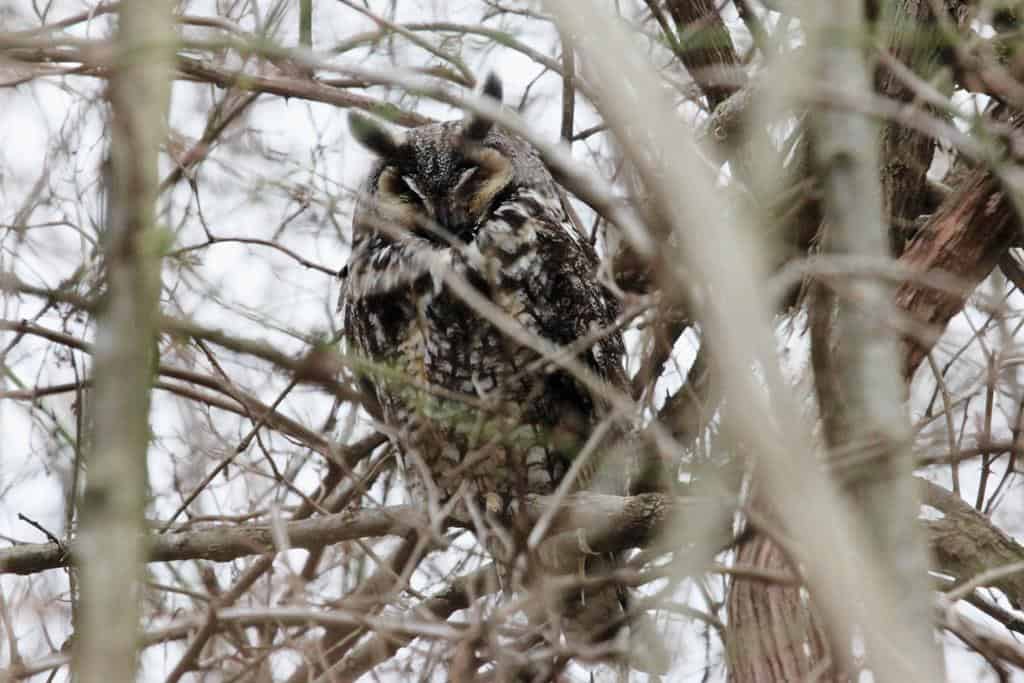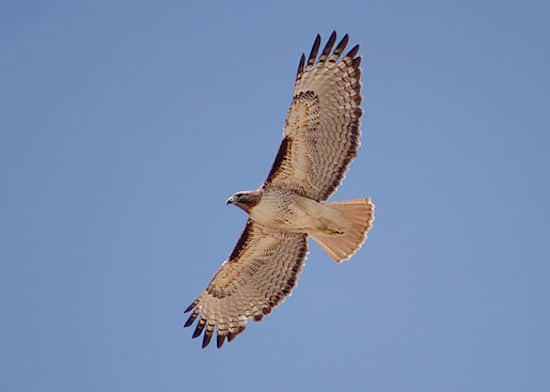Long-eared owls are most frequently seen in flight and in fading light, so the field marks used for perched birds are rarely helpful. These owls have heavily streaked underparts. It is usually not possible to see the streaks on a flying bird, but they make long-eareds look like they are uniformly dark below when in flight.
The only contrast is the pale area under the tail. The dark on the wing tips of long-eared owls is interrupted with paler, usually orangish, feathers. The result is a slightly contrasting patch but no appearance of solid black wing tip.
Long-eareds are notorious for their silence, even in the breeding season, but they occasionally give low, moaning hoots.
Hear the long-eared owl:




